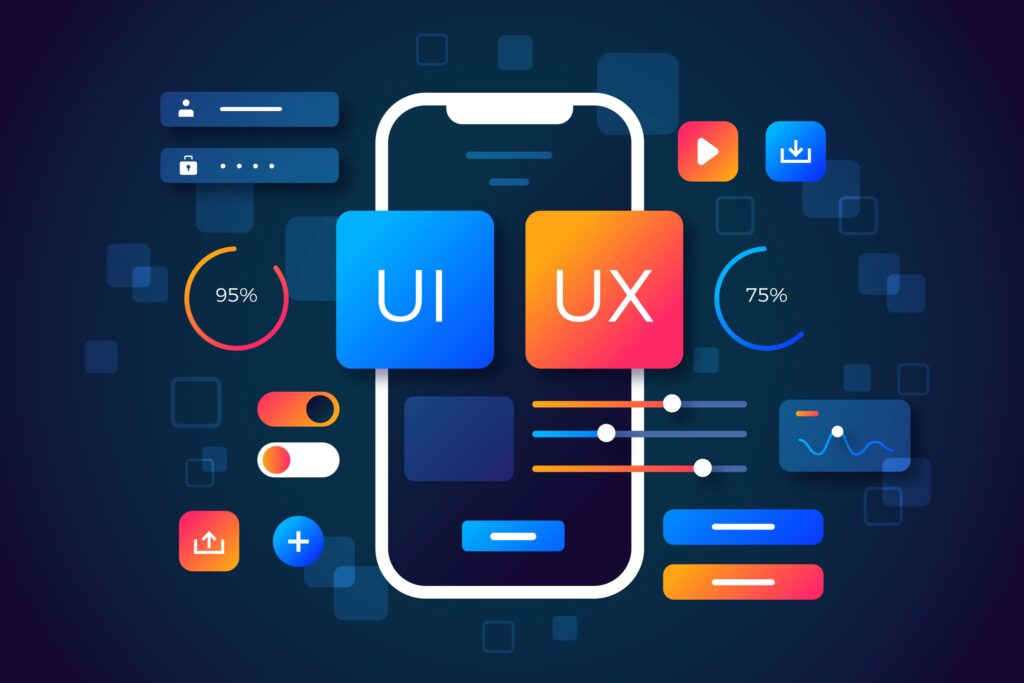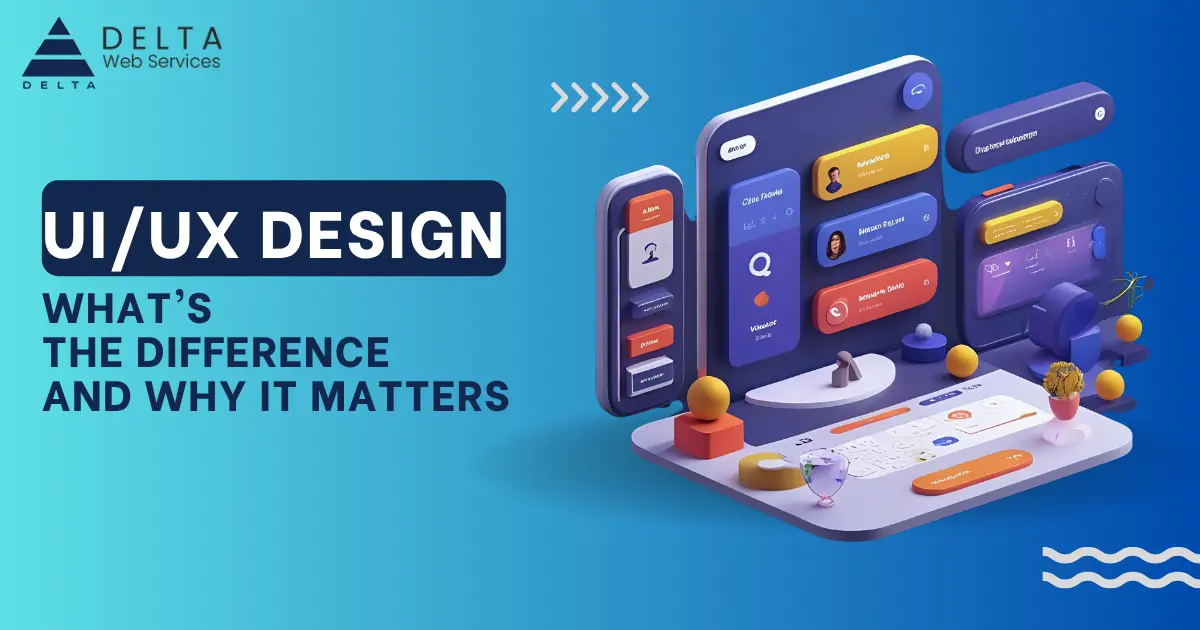The secret is the quality of their UI (User Interface) and UX (User Experience). Though too often used interchangeably, UI and UX are not synonymous. They are two halves of the same coin—each essential to how a digital product behaves and feels.
Here, we’ll walk you through the most significant UI vs. UX differences, their intersection, and why both are so crucial to creating experiences users love.
What Is UX Design?
UX design, short for User Experience design, is all about how a product works. It focuses on the end-to-end experience a person has when interacting with a website, app, or digital platform.
UX is about solving problems. It asks questions like:
- Can users find what they’re looking for easily?
- Is the journey from start to finish seamless?
- Does the product meet their needs without frustration?
Key Components of UX Design:
- User Research – Understanding who the users are and what they need.
- Personas & User Journeys – Mapping out typical behaviors and goals.
- Wireframing & Prototyping – Building low-fidelity and interactive models.
- Usability Testing – Validating ideas with real users.
- Information Architecture – Organizing content and navigation logically.
A UX designer’s goal is to optimize the functionality and emotional satisfaction of the user’s experience. It’s less about how the product looks and more about how it works.
What Is UI Design?
UI design, or User Interface design, deals with the visual layout and interactive elements users engage with—think buttons, icons, colors, fonts, spacing, and navigation.
UI design ensures that the interface is:
- Visually appealing
- On-brand
- Easy to use
- Consistent across devices
Where UX defines the path, UI shapes what that path looks like. It’s like the difference between architecting a building (UX) and decorating the interior (UI).
Key Components of UI Design:
- Visual Hierarchy – Guiding user attention through layout and design.
- Color Theory & Typography – Enhancing readability and aesthetics.
- Design Systems – Ensuring consistency across screens and products.
- Microinteractions – Animations or visual cues that respond to user actions.
- Accessibility – Designing for users of all abilities.
UI vs UX Design: The Key Differences
Let’s break down the differences between UI and UX design in a simple way:
| Feature | UX Design | UI Design |
| Focus | How the product works | How the product looks |
| Goal | Solve user problems | Create attractive, usable interfaces |
| Process | Research → Strategy → Structure → Testing | Style → Branding → Design systems → Responsiveness |
| Tools | Figma (for prototyping), UXPin, Sketch, Adobe XD | Figma (for visual design), Photoshop, Illustrator |
| Outcome | Wireframes, flows, prototypes | Design mockups, visual guides |
Real-Life Example
Imagine using an e-commerce website.
- If it’s hard to find product categories or the checkout process is confusing, that’s a UX issue.
- If the fonts are too small, colors clash, or buttons are inconsistent, that’s a UI issue.
Together, UX ensures that you can complete your purchase easily, while UI makes the experience visually pleasant and on-brand.
Why UI and UX Must Work Together
A well-designed user experience without visual appeal might still feel uninviting. Likewise, a beautiful interface with a broken flow can leave users frustrated.
UI without UX = Attractive but confusing
UX without UI = Functional but boring
UI + UX = Engaging, efficient, and enjoyable
Successful digital products strike the right balance between both disciplines. That’s why companies today hire teams that bring together UI designers, UX designers, and product strategists to work collaboratively.

The Business Case for Good UI/UX Design
Investing in both UI and UX design leads to more than happy users—it creates measurable business value.
1. Increased Conversions
Clear navigation and attractive design guide users toward taking action—whether it’s signing up, buying, or engaging.
2. Higher Retention Rates
Users are more likely to return to a site or app that feels intuitive and visually pleasing.
3. Reduced Development Costs
UX testing early in the process prevents expensive redesigns later.
4. Better Brand Perception
Consistent, clean UI combined with a seamless UX boosts trust and professional credibility.
5. SEO Benefits
Good UX (like faster load times, mobile responsiveness, and easy navigation) directly contributes to better search rankings.
Common Misconceptions
Let’s clear up a few myths:
- “UX is only about usability.”
No—UX is a strategy that includes research, emotion, and long-term engagement. - “UI is just making things pretty.”
UI is rooted in psychology, brand identity, and usability—not just aesthetics. - “You only need one or the other.”
In reality, skipping either compromises the user experience and product success.
Conclusion
For digital design, it’s not UI against UX, it’s UI and UX. They each have a vital part to play when it comes to how a product behaves in the real world. UX design makes the ride nice and smooth, and UI design makes that ride look pretty too.
For companies, this translates into not only creating stunning websites and apps—but creating ones people love to use, trust, and go back to.
Need Assistance with UI and UX Design?
At Delta Web Services, we do one thing: produce digital products that are a joy to look at and use. Our designers design interfaces informed by user behavior research, so your product not only meets the mark—it beats it.
Ready to make designs that drive results? Let’s talk.




